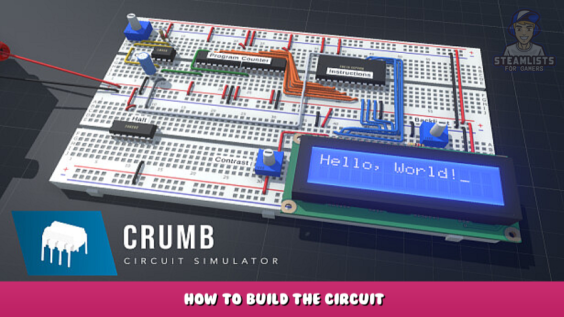
Welcome to (CRUMB – How to build the circuit). For those new to building circuits on a breadboard, a straightforward circuit. We appreciate your reading through to the end. Please leave a comment if you have any queries or reservations. Even though it may seem strange at first, you will quickly adjust.
Overview
This guide is for beginners who want to learn how to use a breadboard to create a circuit based on your design. This guide will include:
- Learn the breadboard
- Preparation
- Components and wire
- Power on
This guide’s circuit diagram is:
Learn the breadboard
Before building the circuit, it is important to understand a breadboard.
The breadboard is a common tool in the lab to build the temporary circuit. Breadboards are faster to use and less tedious than soldering.
Attach the power rail to the breadboard’s top and bottom.
The breadboard should look as follows after attaching the power rail.
The diagram above shows green lines representing (row and) column.
For example, the wires/connections inserted in A1 are electrically connected through B1, C1, D1, and E1. This also applies to power rails.
Preparation
Before we can make connections, there are a few things that we need to do. Connecting the power rails is the first step.
As you can see, the (+) rail at the top is connected with the (+) rail at the bottom. The same applies to the (-) rails. This is a great deal. It’s easier for us to make connections and manage wires Circuits are becoming more complex.
Plan the placement of all components if you have many components. This simple but critical step to avoid wire crossings on the breadboard. This guide only requires a few wires so it is not important.
Placement of wire and components
We will first look at the circuit diagram.
We must be aware of the polarity between the components.
This circuit diagram shows that the (+ polarity of the power source is connected with one terminal of the 330ohm resistor.
Another terminal of the resistor connects to the anode(, which is also the positive terminal) from the LED. The (terminal) (of the cathode is connected to (-) terminals of the power source.
Resistor
Now we can place the resistor on the breadboard first. In this example, the resistor is placed in holes E12 and F12. The resistor’s resistance is set at 330 ohm.
Light Emitting Diode (LED)
Next, I place the LED into hole F18 to anode (+) and E18 to cathode A14Y -).
IMPORTANT – Please pay attention to the anode and cathode (+) pins on the LED.
Wires
Connect each component (resistor to LED) to complete a closed circuit.
To understand the diagram better, you can compare it with the circuit diagram.
Power On
Power Supply
Finally, we will need a power supply to turn the circuit on. The diagram below shows that the red terminal of the power supply is connected to the (+) motor rail, while the black terminal is connected to the (-) power train.
Power On! !
Finally, we can switch the Interact tool to turn the power supply on.
Congratulations! You completed your first mini project. We hope you enjoy this guide.
Thanks. =)
I hope you enjoy the Guide we share about CRUMB – How to build the circuit; if you think we forget to add or we should add more information, please let us know via commenting below! See you soon!
- All CRUMB Posts List


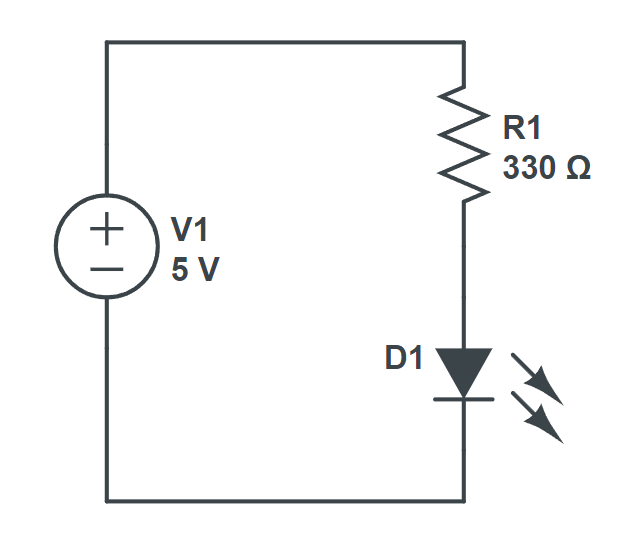
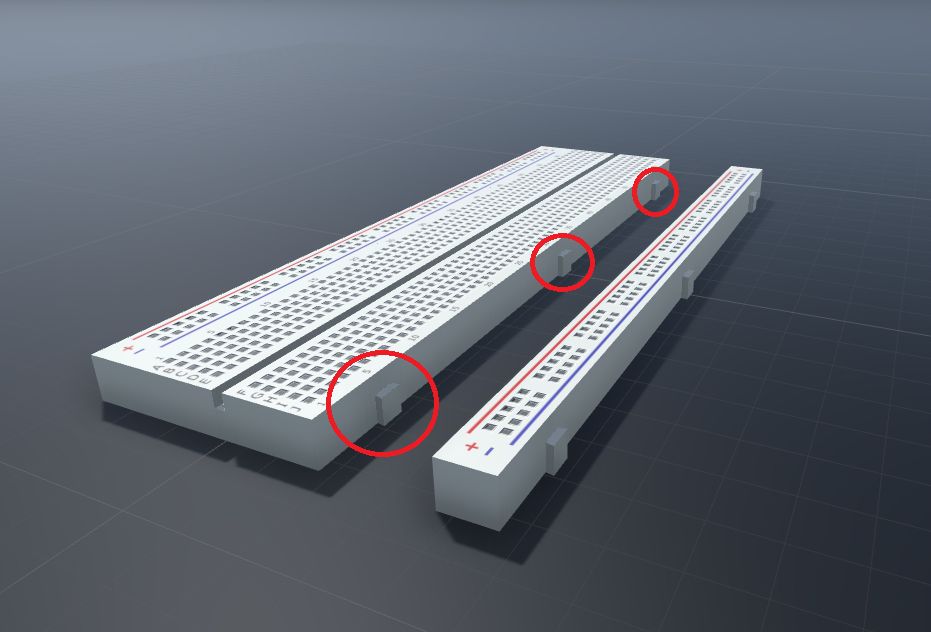
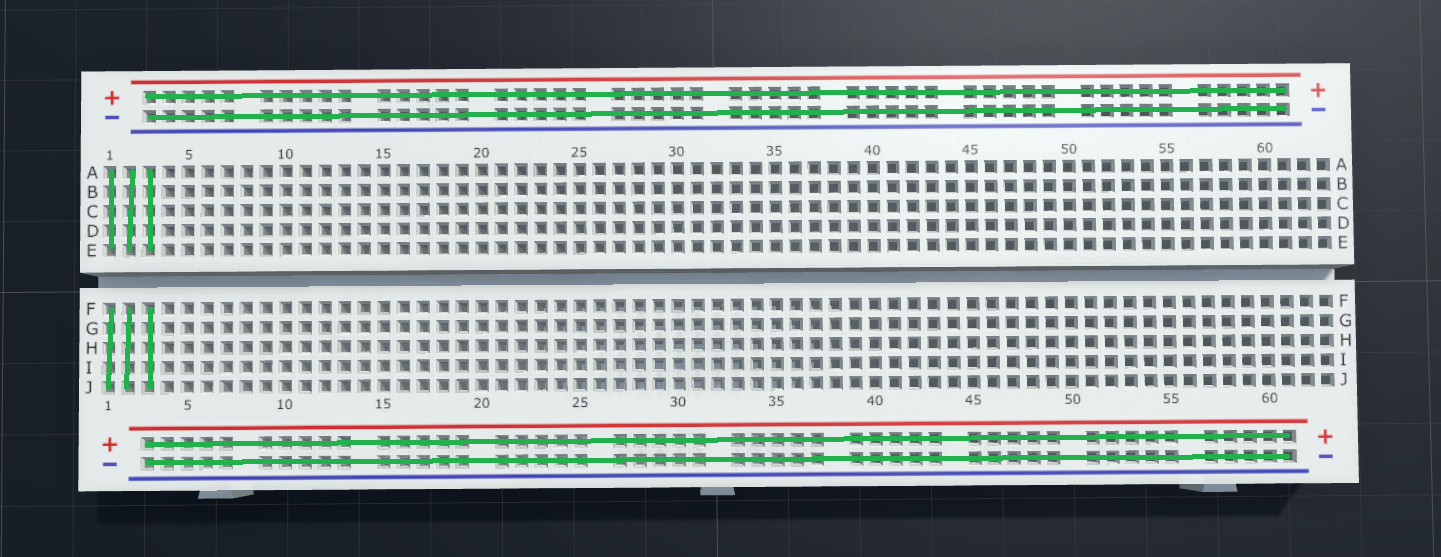
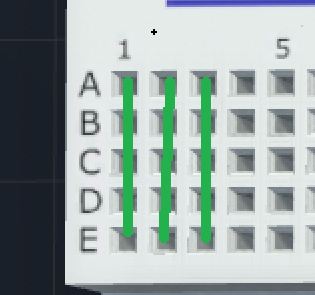
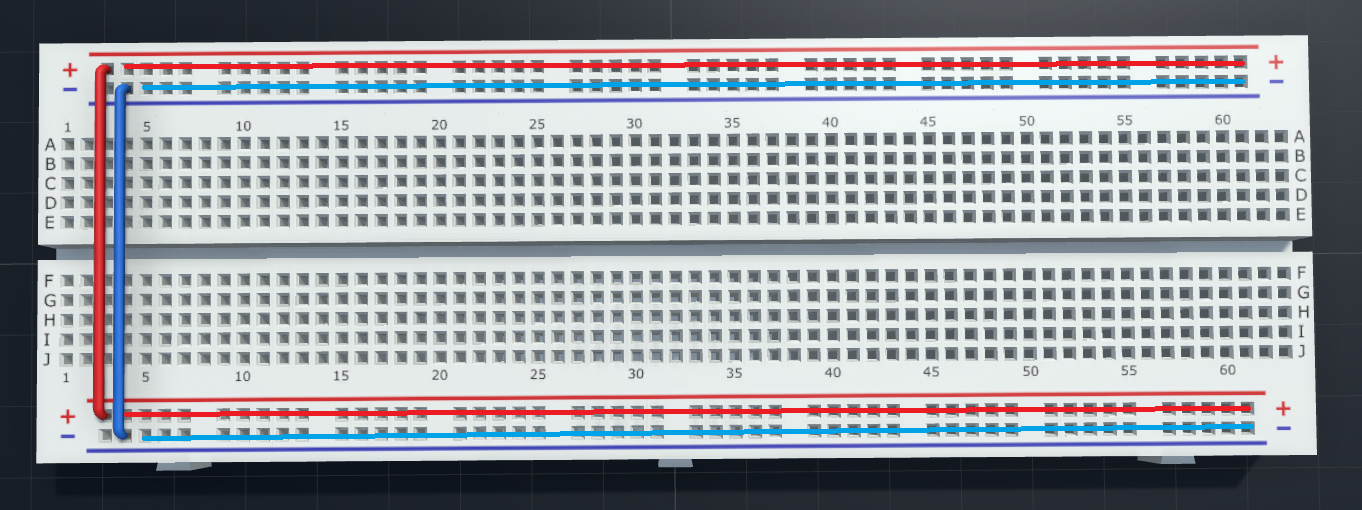
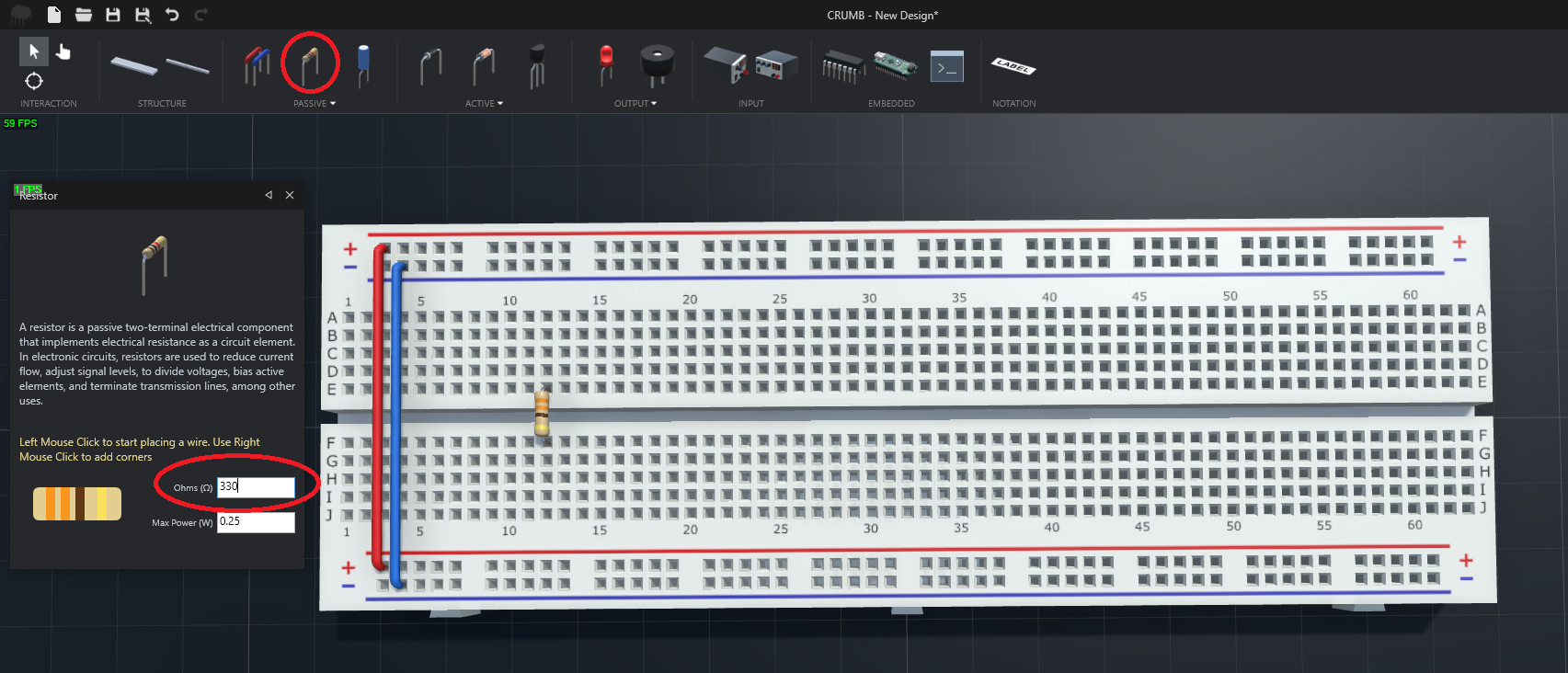
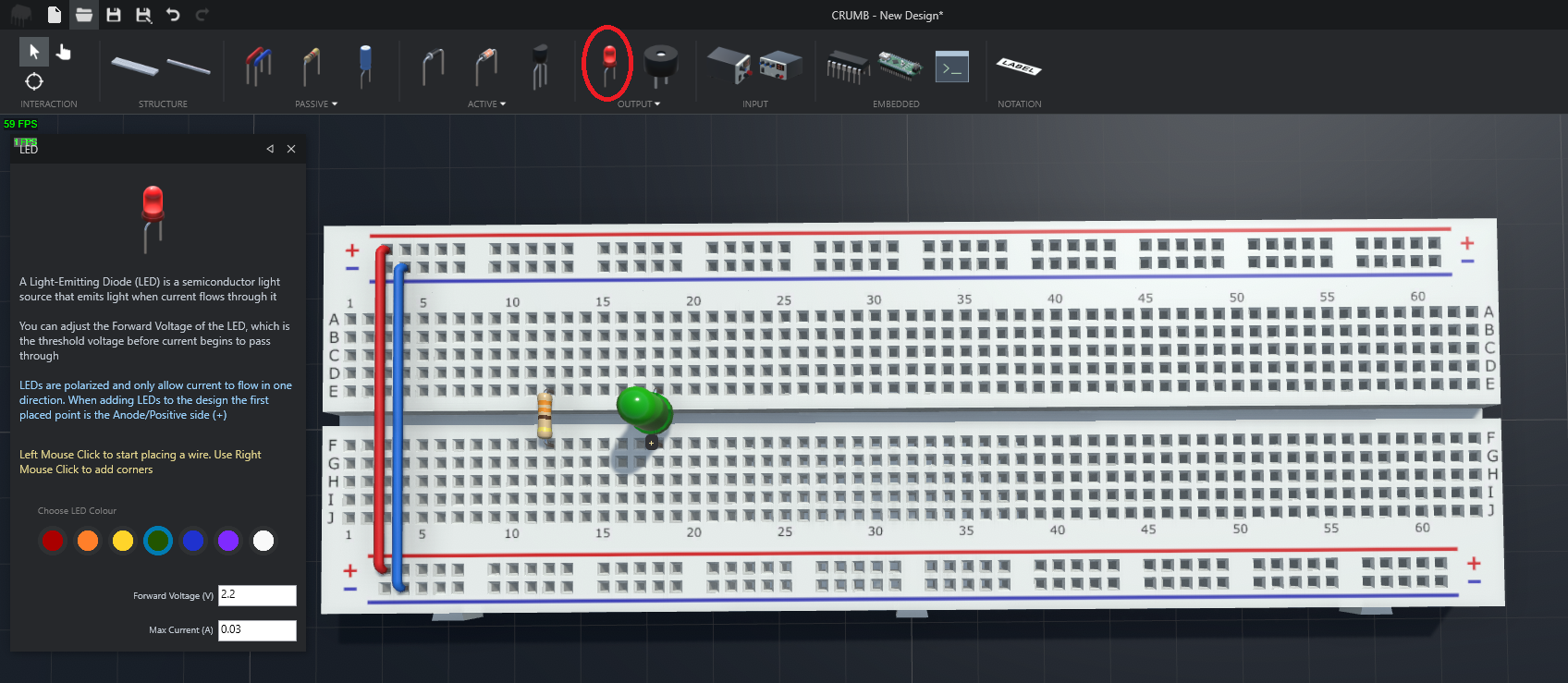
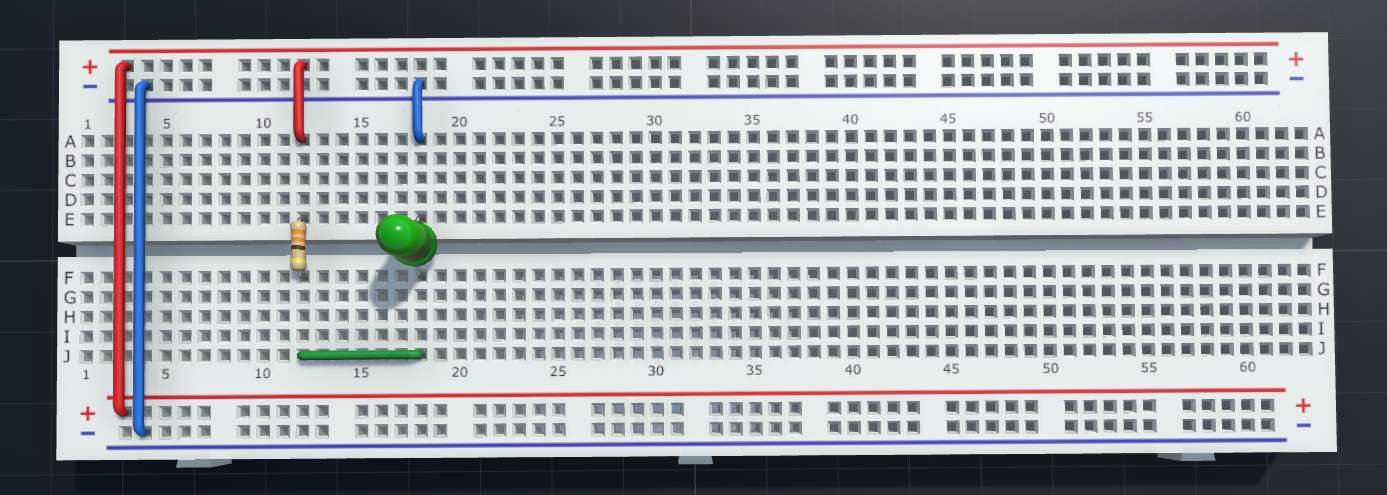

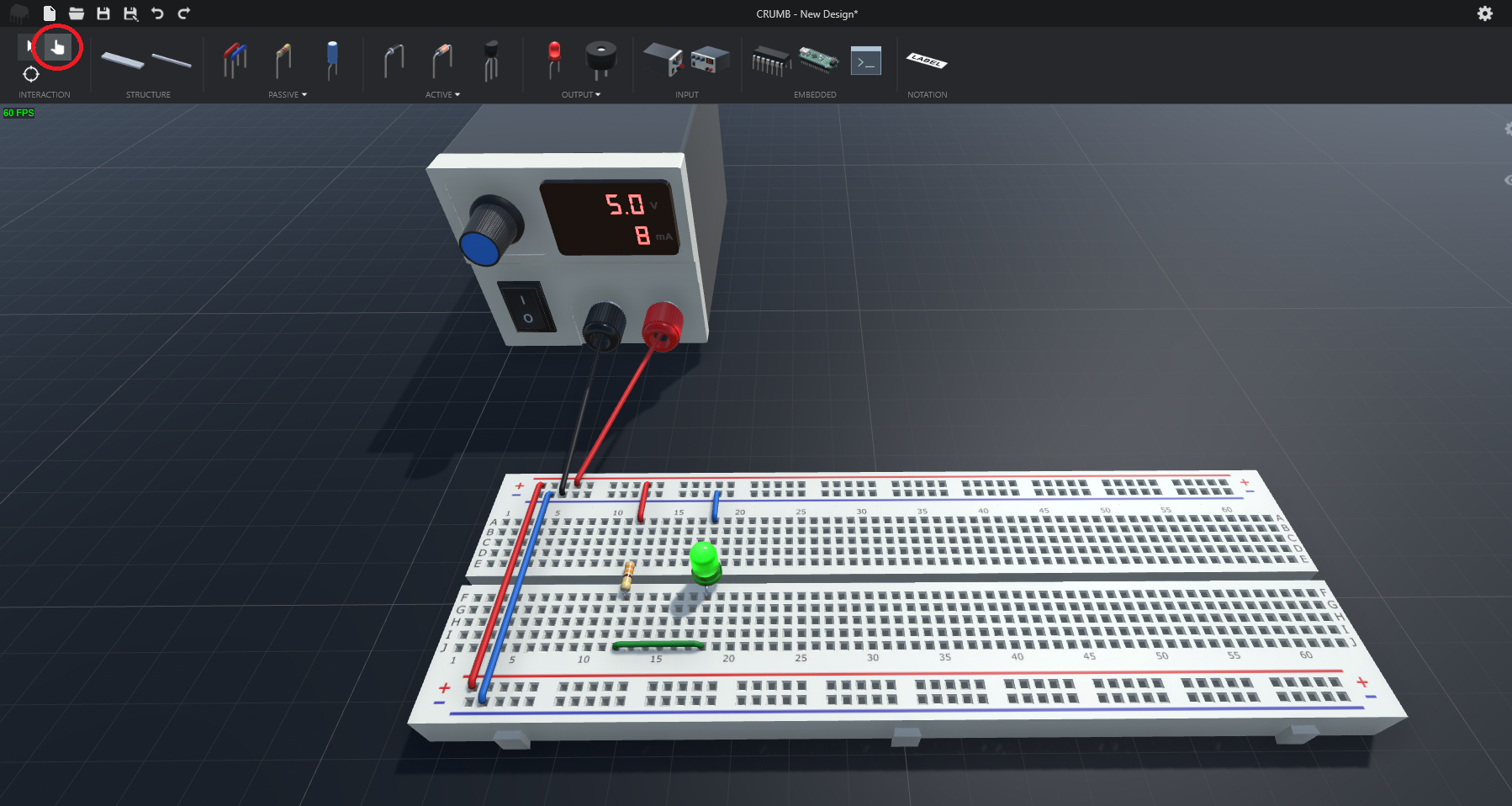
Leave a Reply